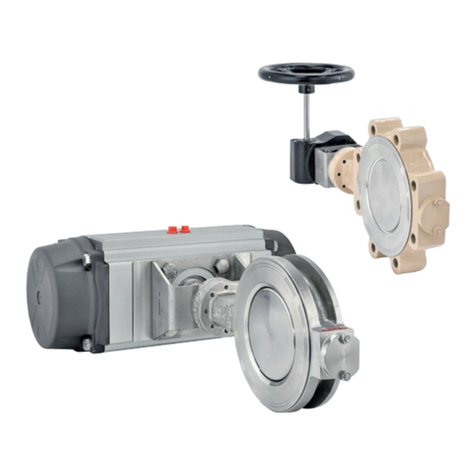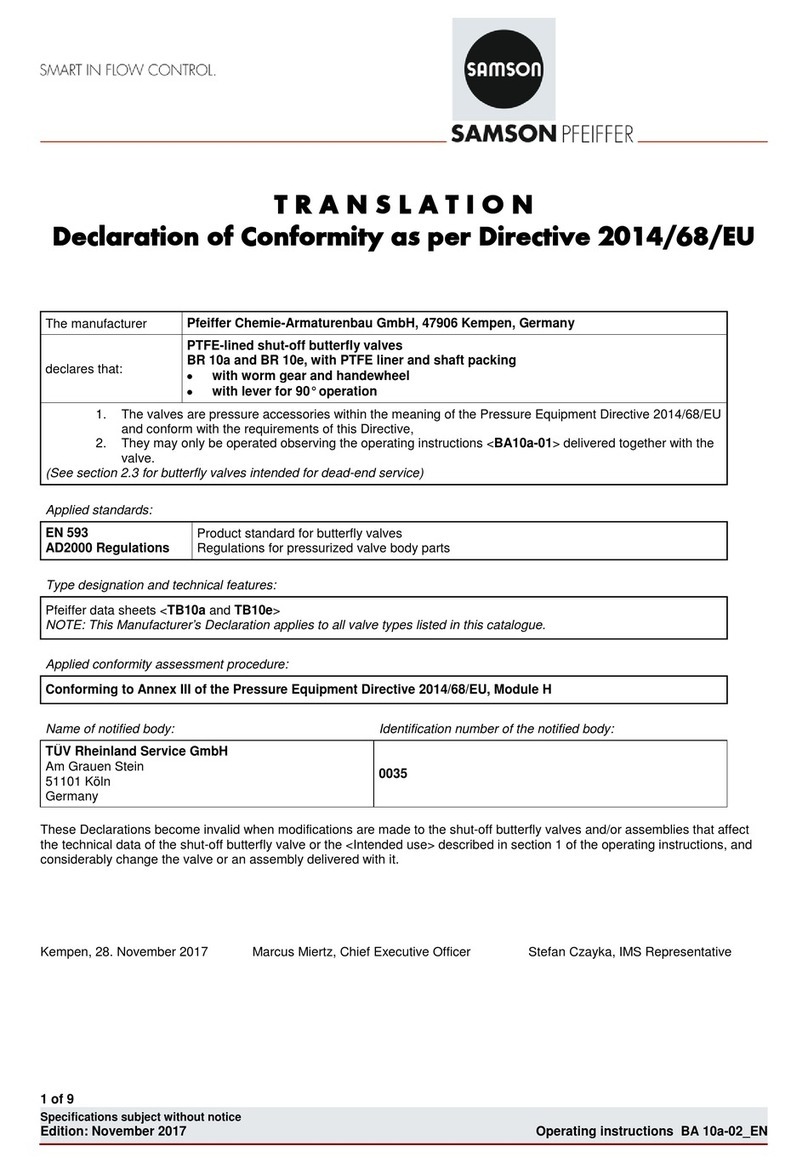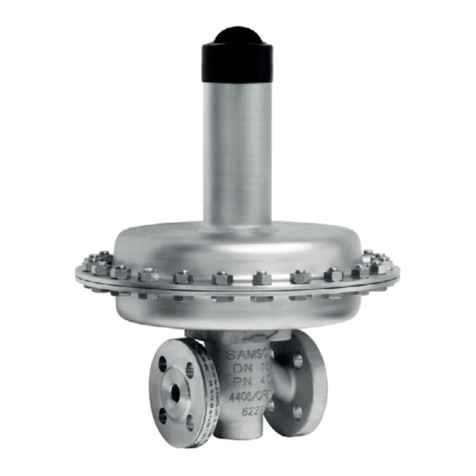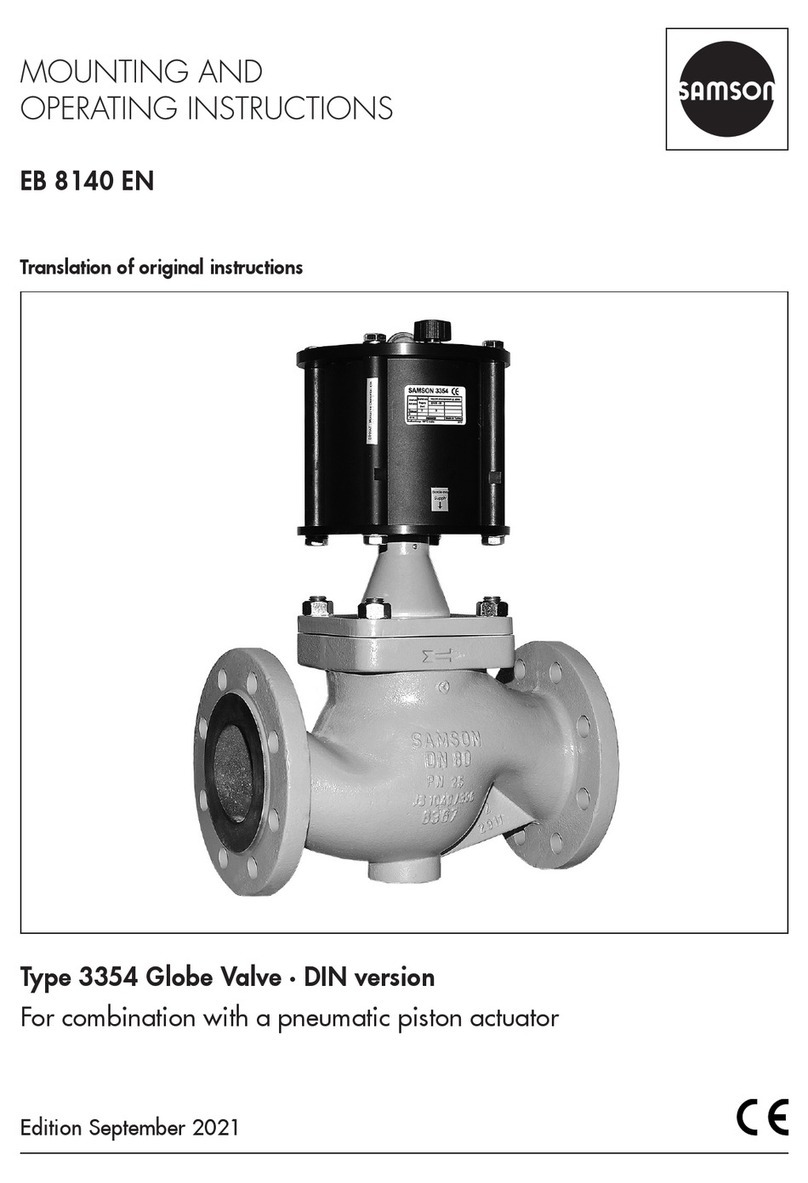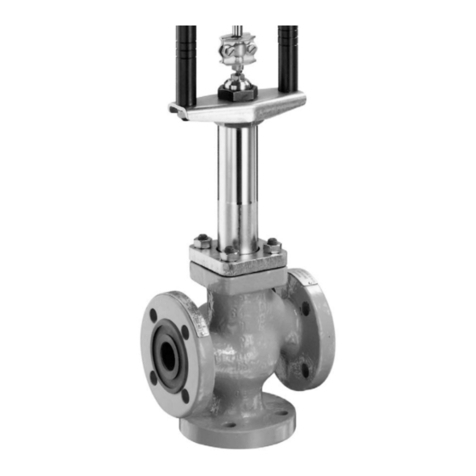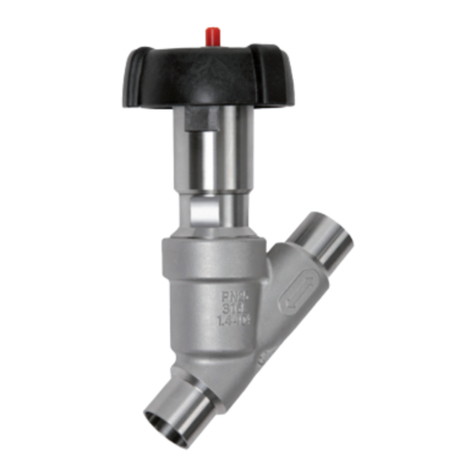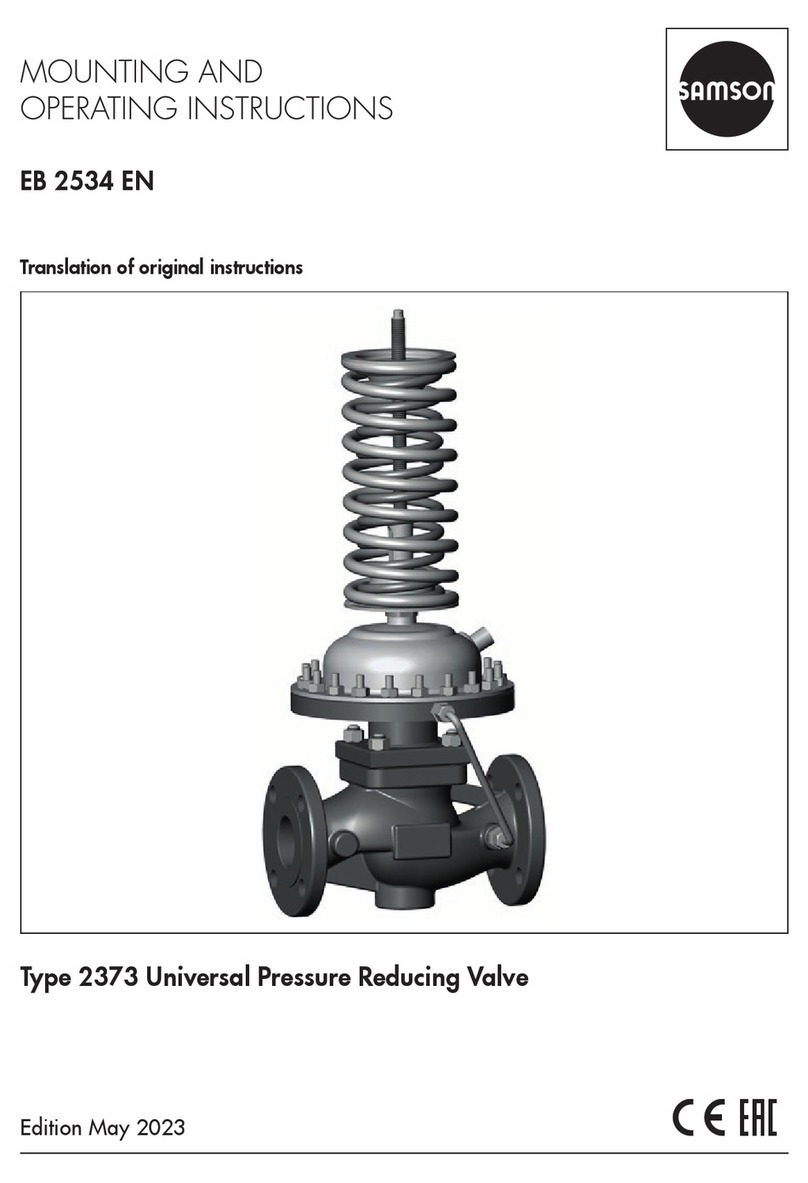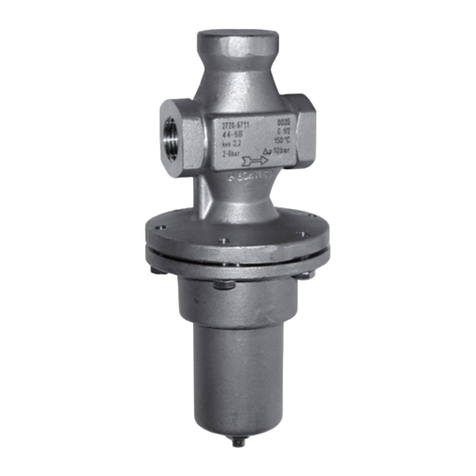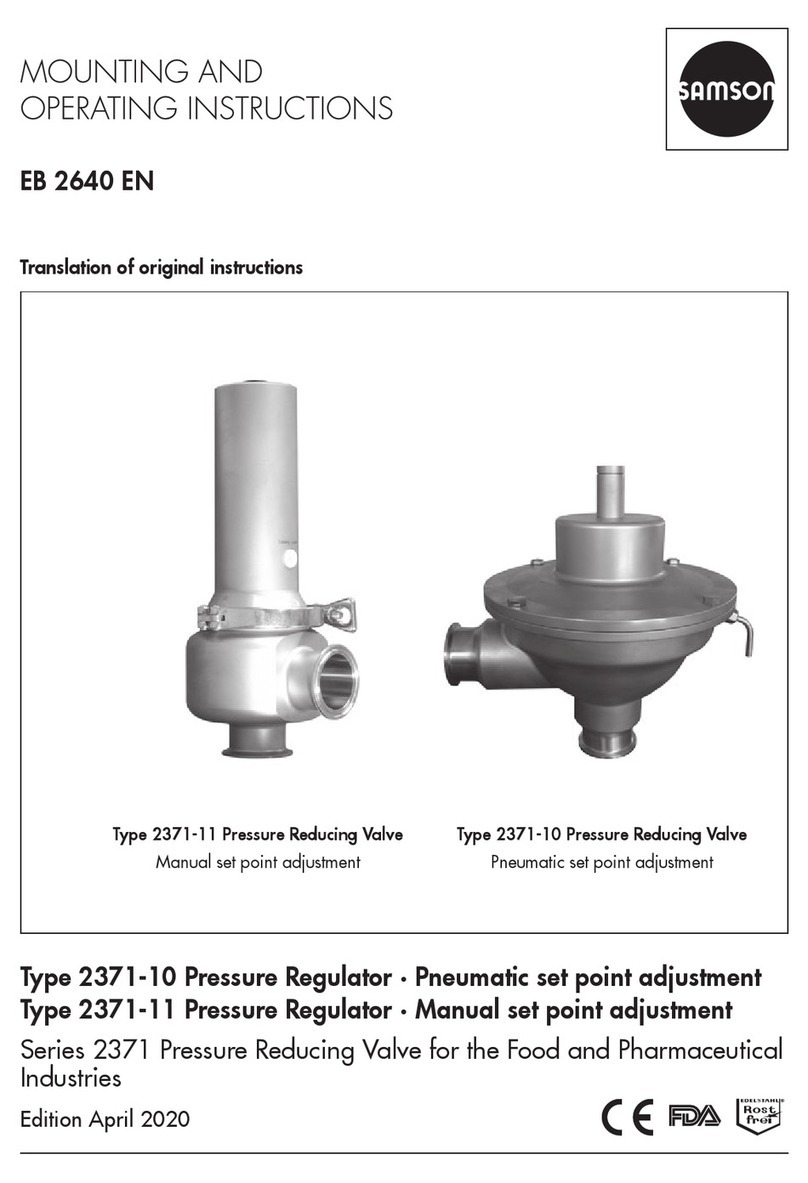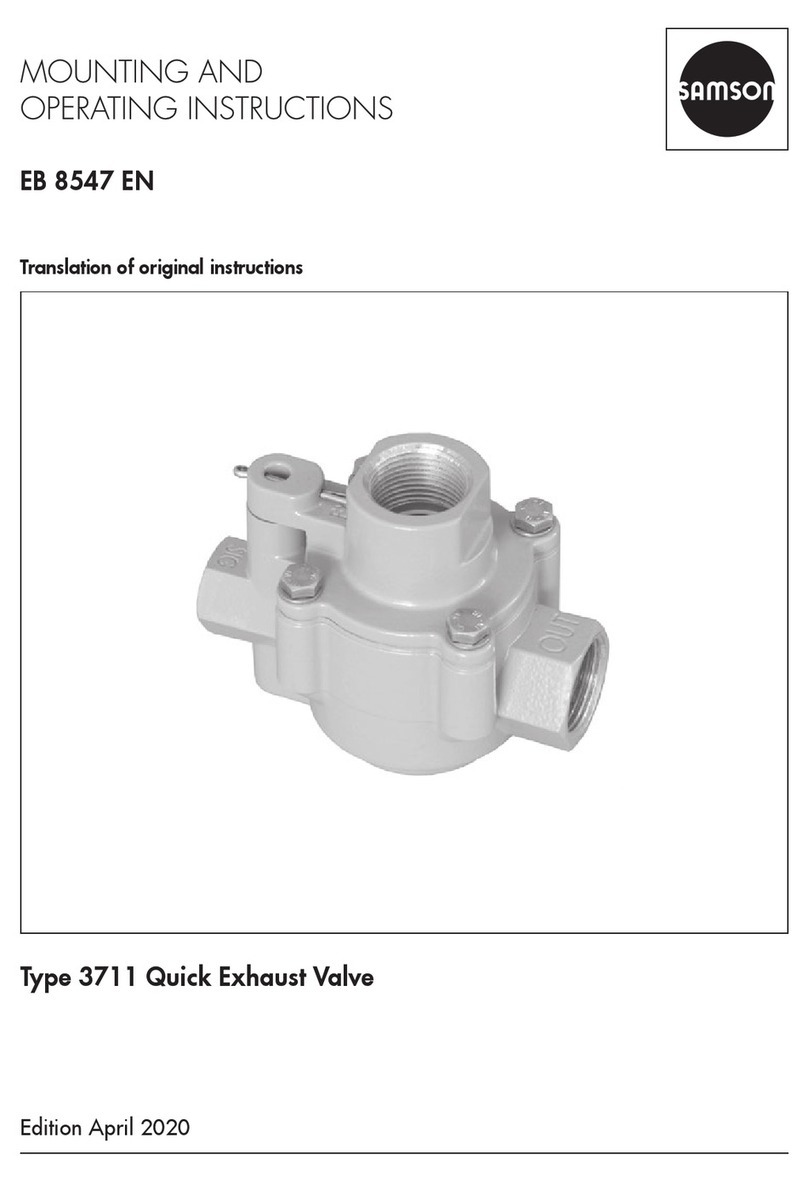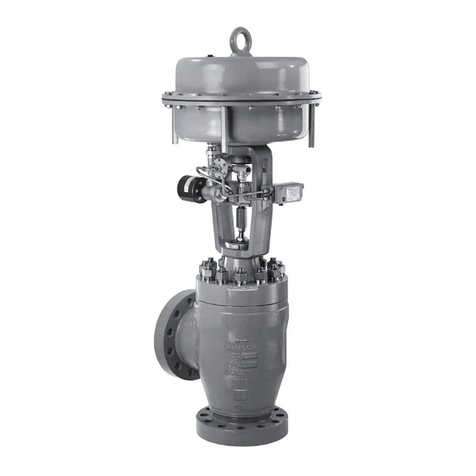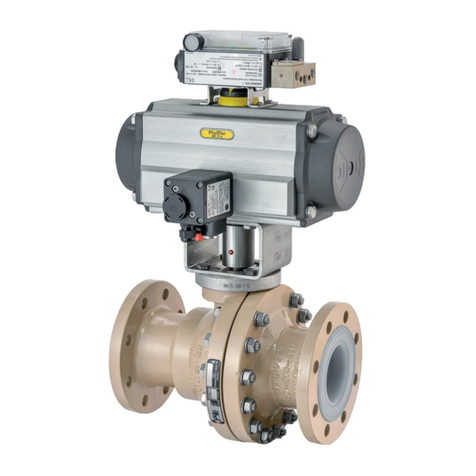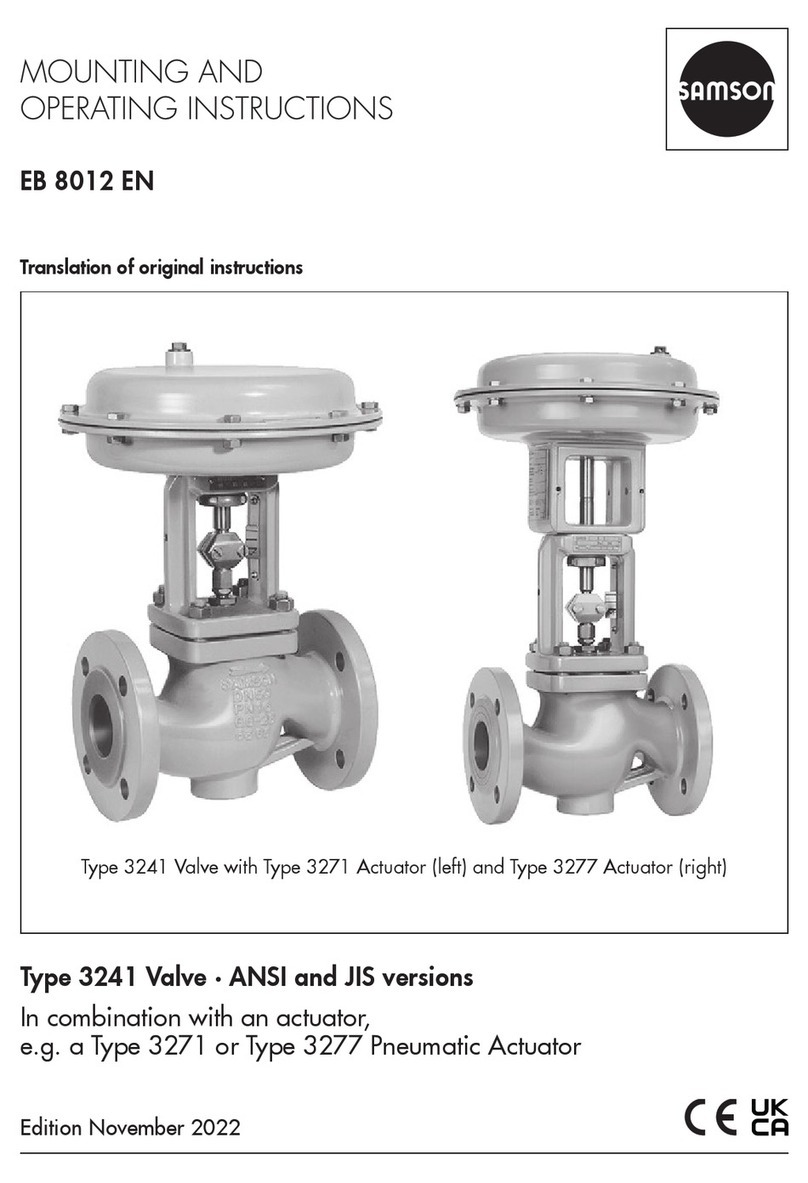
Contents
EB 8052-1 EN
1 Safety instructions and measures ................................................................1-1
1.1 Notes on possible severe personal injury ......................................................1-4
1.2 Notes on possible personal injury ................................................................1-5
1.3 Notes on possible property damage.............................................................1-7
1.4 Warnings on the device...............................................................................1-8
2 Markings on the device ..............................................................................2-1
2.1 Valve nameplate .........................................................................................2-1
2.2 Actuator nameplate.....................................................................................2-2
2.3 Material numbers........................................................................................2-2
2.4 Label when an adjustable packing is installed ...............................................2-2
3 Design and principle of operation ...............................................................3-1
3.1 Versions .....................................................................................................3-4
3.2 Additional ttings........................................................................................3-4
3.3 Valve accessories........................................................................................3-5
3.4 Technical data ............................................................................................3-5
4 Shipment and on-site transport ...................................................................4-1
4.1 Accepting the delivered goods .....................................................................4-1
4.2 Removing the packaging from the valve........................................................4-1
4.3 Transporting and lifting the valve..................................................................4-1
4.3.1 Transporting the valve .................................................................................4-2
4.3.2 Lifting the valve...........................................................................................4-3
4.4 Storing the valve.........................................................................................4-4
5 Installation.................................................................................................5-1
5.1 Installation conditions..................................................................................5-1
5.2 Preparation for installation...........................................................................5-3
5.3 Assembly ...................................................................................................5-3
5.3.1 Mounting the external anti-rotation xture.....................................................5-4
5.3.2 Mounting the actuator onto the valve..........................................................5-12
5.3.3 Installing the valve into the pipeline ............................................................5-13
5.4 Conguring the temperature control............................................................5-14
5.4.1 Determining the temperature limits .............................................................5-15
5.4.2 Calculating the required heating power ......................................................5-15
5.4.3 Conguring the temperature sensor ............................................................5-15
5.4.4 Conguring the electric trace heating..........................................................5-15
5.5 Testing the installed valve...........................................................................5-15
5.5.1 Leak test...................................................................................................5-17
5.5.2 Travel motion............................................................................................5-17
